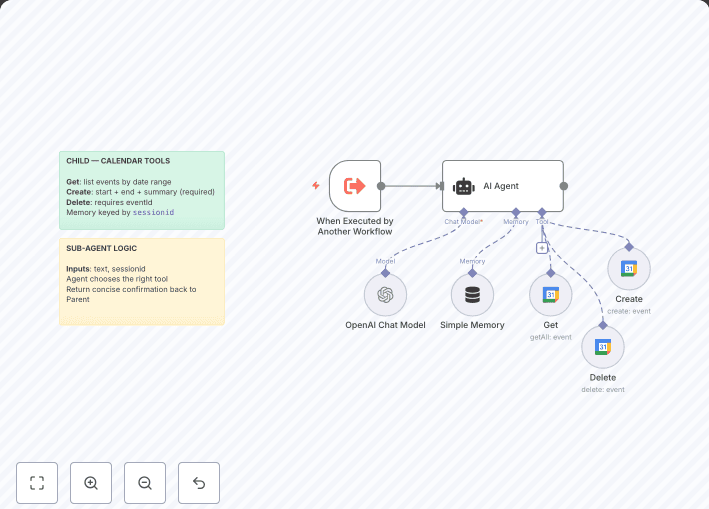Imagine a dedicated financial expert tirelessly working behind the scenes, sifting through every transaction, every investment move, and every accounting entry. That's exactly what this automated system does for you, turning raw financial chaos into crystal-clear insights.
Automated Data Gathering (The Collector):
Transaction descriptions, amounts, dates, investment details, income/expense categories (if available).AI-Powered Data Cleaning & Categorization (The Organizer & Detective):
transaction description and intelligently assigns it to a standard financial category (e.g., "Dining," "Groceries," "Utilities," "Software Subscriptions"). No more manual tagging!transaction amount that's too high, a potential duplicate entry, or any suspicious activity. It flags these items immediately.Clean, categorized transactions, flagged anomalies with reasons.Deep Financial Analysis & Insight Generation (The Strategist):
spending trends over time. Are you spending more on certain categories? Where can you save?investment gains and losses and gives you a clear picture of your portfolio's health.financial health and, critically, gives you 3-5 clear, actionable recommendations on how to improve your finances or capitalize on opportunities.Analysis summaries, spending insights, investment performance notes, overall financial health assessment, and precise recommendations.Automated Reporting & Smart Alerts (The Communicator):
financial report. This report populates a pre-designed Google Docs template, making it look polished and ready for review.anomalies, you get an instant notification (e.g., via Slack) so you can investigate immediately.report is automatically sent to your email inbox, and a summary notification is sent to your team's Slack channel.Building this powerful system is simpler than you might think. Here’s your step-by-step guide:
Prepare Your Digital Foundation:
HTTP Request structure.Date, Description, Amount at minimum). You'll use CSV Read nodes instead of HTTP Request.Date, Description, Amount, Source, Transaction Type, Asset, etc.Category, Is Flagged, Flag Reason, alongside the raw data columns.Google Doc that will be your professional report template. Design it how you want your final report to look. Insert clear placeholders like {{ report_title }}, {{ executive_summary }}, {{ spending_analysis }}, {{ overall_assessment_recommendations }}, etc., where the AI content will go. Crucially, copy the Document ID from the URL of this template.Get Your API Keys & Credentials:
Import the n8n Workflow:
Connect Your Tools (N8n Credentialing & Linking):
OpenAI, Google Sheets, Gmail, Slack, HTTP Request).Customize Your Workflow Nodes (The Smart Part!):
Cron Node (Node 1): Set your desired Schedule (e.g., "Every 1 Day" for daily reports, or "Every 1 Week" for weekly).HTTP Request Nodes (Nodes 2, 3, 4):
URLs for your financial APIs.Method (GET/POST) and Authentication type (e.g., "Header Auth," "OAuth2") specific to each API.CSV Read nodes and point them to your CSV file paths.Google Sheets Nodes (Nodes 7, 8, 13, 14):
Spreadsheet IDs for your "Raw Financial Data" and "Categorized Financial Data" sheets.Sheet Name is correct (e.g., "Sheet1" or "Transactions").Values correctly so that the data goes into the right columns in your sheets.OpenAI Nodes (Nodes 10, 11, 16, 17, 18):
Prompts within these nodes. Tailor the categories for AI Agent 1, specify what counts as an "anomaly" for AI Agent 2, and ensure the tone and focus of recommendations from AI Agent 5 match your needs. Test these prompts extensively!Google Docs Node (Node 20):
Template Document ID from Step 1.Values from your consolidated AI insights ({{ $json.report_title }}, etc.) to the placeholders you created in your Google Doc template.Slack Nodes (Nodes 22, 24):
Chat IDs (channel IDs) for where you want anomaly alerts and general report notifications to appear.Test & Activate!
Congratulations! You've just built a sophisticated, AI-powered financial analysis and reporting system that will bring unprecedented clarity and control to your finances.


